
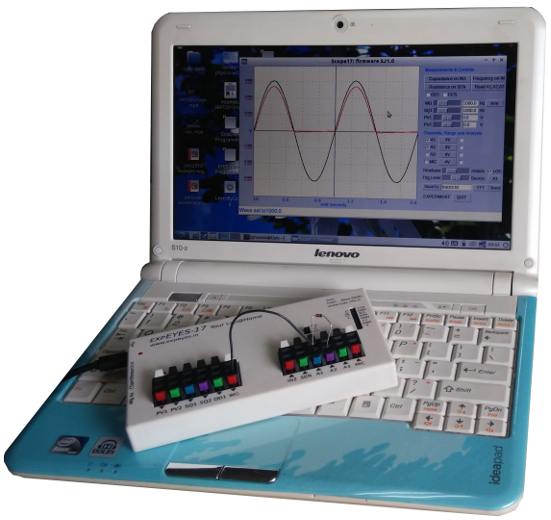
ExpEYES provides a hardware and software framework for developing science experiments, demonstrations and projects without getting in to the details of electronics or computer programming. The device acts as a collection of test equipment providing the functions of Voltmeter, Oscilloscope, Function Generator, Data Logger etc. It converts your PC into a science laboratory. The design of ExpEYES combines the real-time control/ measurement capabilities of micro-controllers with the ease and flexibility of Python programming language for data analysis and visualization.
This work has it’s origins in the PHOENIX project of Inter-University Accelerator Centre, New Delhi. To know more about it’s evolution Click HERE. A pictorial summary of the deveopments, carried out under the PHOENIX project is shown in This Poster.
Inter-University Accelerator Centre, New Delhi, conducts training programs in computer interfaced science experiments under the PHOENIX project. To be informed about these programs and other developments you may join the phoenix mailing list.
For discussions regarding ExpEYES/SEELab, join the Forum.
The devices currently available are shown below. They offer almost the same features and supported by the same software. The Connectors used are different and SEELab supports SPI plugin devices.
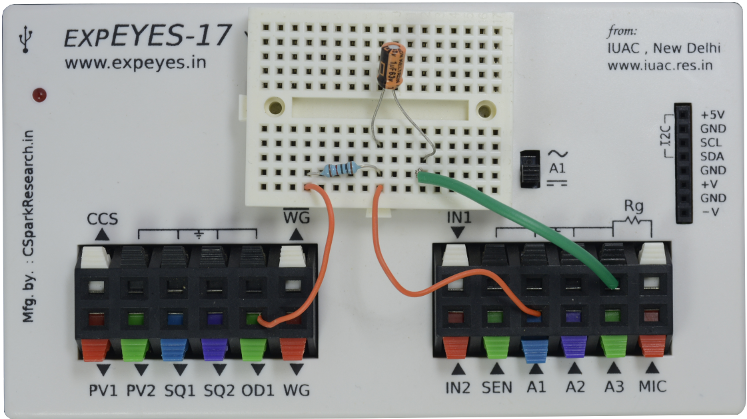
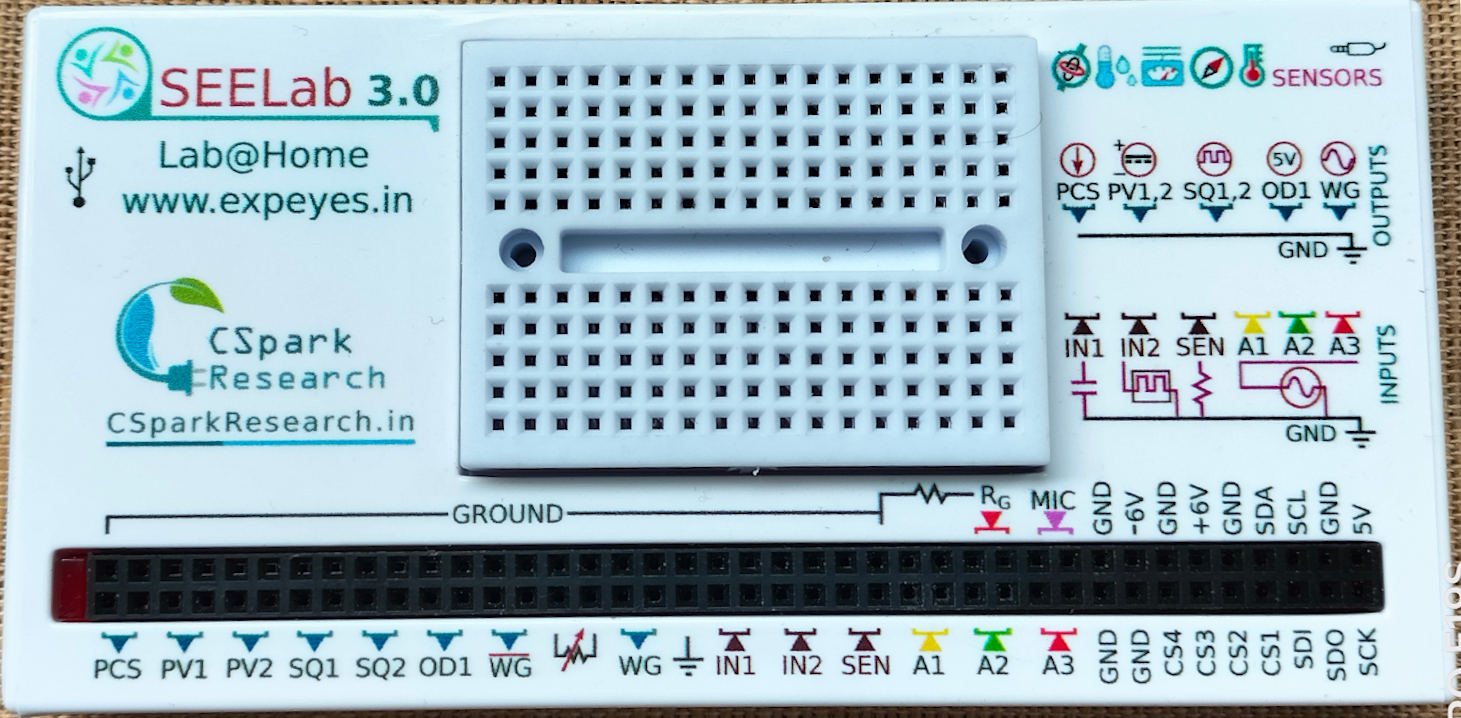
The various Input/Output terminals function as DC supplies, Voltmeter, Oscilloscope, Function Generator, Frequency Counter etc. The functions of the Terminals are briefly described below.
CCS : 1.1 mA Constant Current Source (0 to 1mA programmable for SEELab)
PV1 : Programmable Voltage Source (DC supply). Can be set anywhere from -5V to +5V. You may consider it as a DC power supply.
PV2 : Similar to PV1 but -3.3V to +3.3V range.
SQ1 : A 0 to 5V square wave. Frequency up to 5000 Hz. SQ2 is similar but it is not available when WG is active.
OD1 : Digital output that can be set to 0 or 5 volts.
WG : Waveform Generator. Frequency of the sine wave can be set between 5 Hz and 5000 Hz. The amplitude can be set to 3V, 1V or 80mV from the software.
WG bar: WG output inverted. On SEELab, it’s amplitude can be set anywhere from 0 to full scale by connecting an external resistance.
IN1 : Capacitance meter
IN2 : Frequency counter with duty cycle measurement, accepts pulses having heights between 3 to 5V.
SEN : Measures resistance values between 100 $ \Omega $ to 100 $ k\Omega $. Mainly used with sensors like photo-transistors.
A1 and A2 : These are Oscilloscope/Voltmeter inputs. The input range is -16V to +16V. Maximum sampling rate is 1MHz.
A3 : Similar to A1 and A2 but maximum range is -3.3V to +3.3V only. The input to A3 can be amplified by connecting a gain resistor Rg.
MIC : A condenser microphone can be connected between MIC and ground to digitize sound.
Dual DC Supply : A +6V and -6V outputs are provided for performing experiments using op-Amps. The current capability is around 10mA only.
I2C Interface: External I2C sensors can be connected to the pins 5V, GND, SCL and SDA. The software can auto-detect and use several sensors for measuring distance, pressure, temperature, acceleration etc.
The Software is available on GitHub, under GNU General Public License. Currently the Python Software is available on GNU/Linux and MS Windows. An Android version is available on the Google play store.
Screenshots of the GUI programs available are shown below.
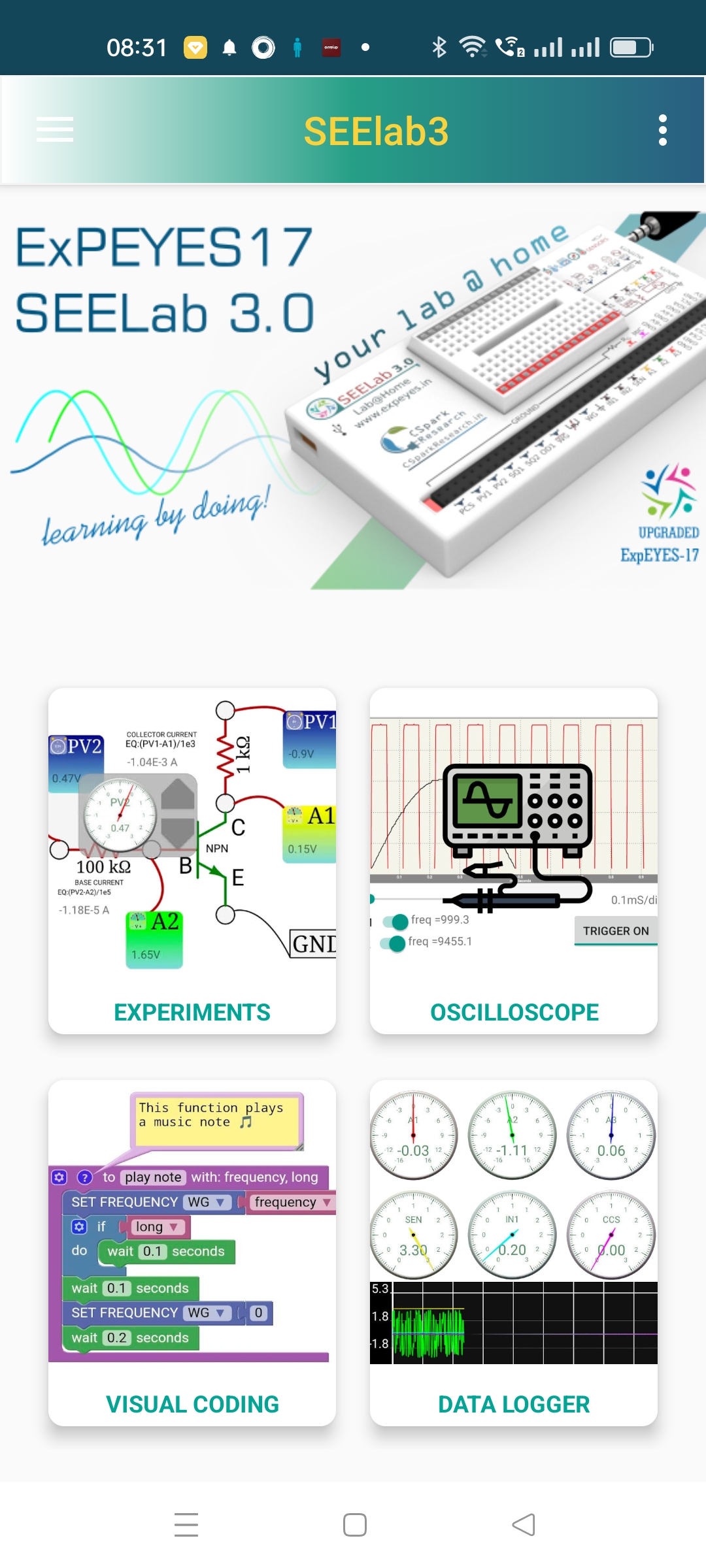
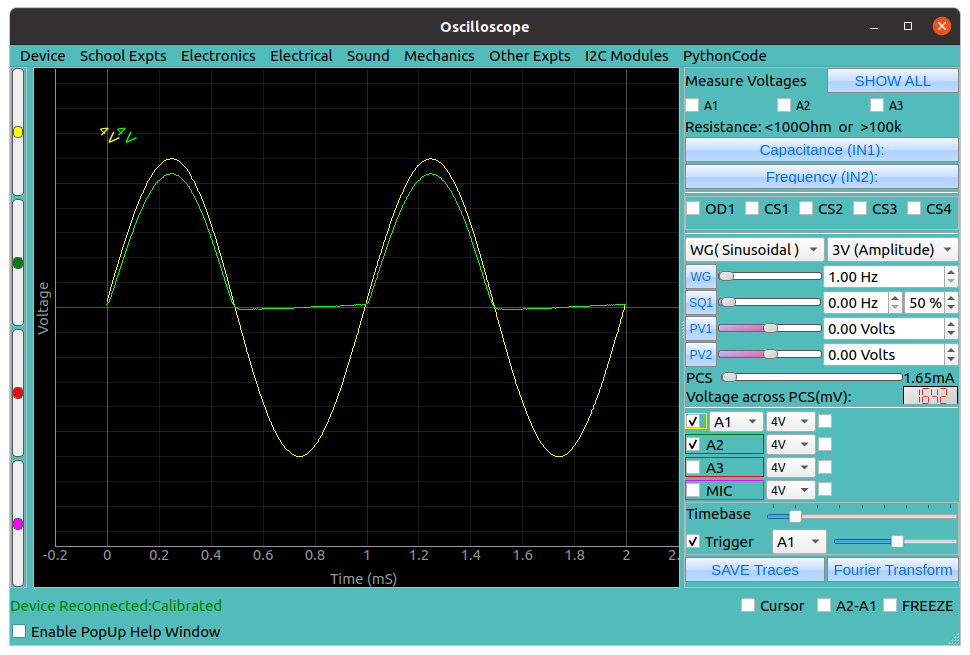
The hardware designs are made available under the CERN Open Hardware License. Fabricated and tested units are commercially available from several sources, listed HERE.
This design is released by Dr. Jithin B P , Cspark Research.
Being a programmable test and measurement equipment, the number of experiments that can be performed using ExpEYES is very large. The following sections describe some experiments that were performed using ExpEYES.
Previous version of the expeyes website is HERE
Ajith Kumar B P
bpajith at gmail dot com